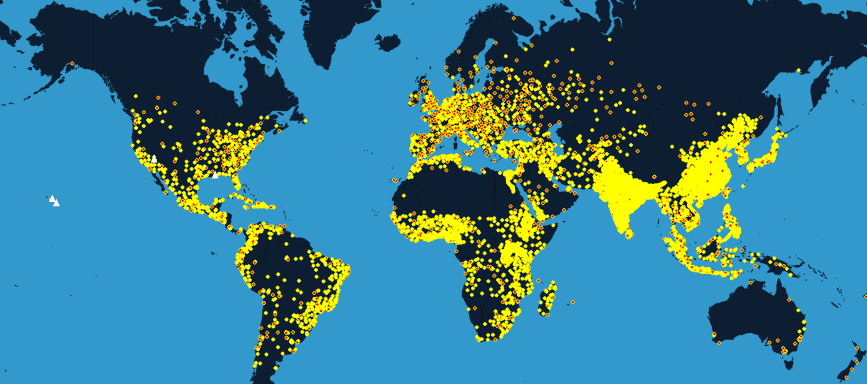Interactive Map: The World as 1,000 People
How would all the people in the world be spread out if there were only 1,000 people on Earth? This interactive map examines the breakdown.
Published
1 day agoon
November 22, 2023
All The People in the World as 1,000 People
The world’s population has doubled in size over the last 50 years.
In 2022, we reached the mark of 8 billion living on Earth. According to UN estimates, by July 2023, all the people in the world numbered 8,045,311,447.
In this interactive map, we use population estimates from the United Nations Population Division to illustrate the world’s population as if the Earth had only 1,000 people. Countries with a population of below 7.6 million did not make our cutoff to be visualized, but are included in overall calculations and listed below.
Over Half of People Live in Asia
Asia is by far the world’s most populous region, with over 4.7 billion people. The continent, led by India and China, represents 59% of the total population.
Imagining the Earth with only 1,000 people helps illustrate this more easily. India would account for 178 people and China would have 177.
Here is the estimated population in July 2023 for each country, and how many people their residents would constitute out of 1,000:
| Country | Total Population (July 2023) | Share of 1,000 Global People |
|---|---|---|
 India India | 1,428,627,663 | 178 |
 China China | 1,425,671,352 | 177 |
 United States United States | 339,996,563 | 42 |
 Indonesia Indonesia | 277,534,122 | 35 |
 Pakistan Pakistan | 240,485,658 | 30 |
 Nigeria Nigeria | 223,804,632 | 28 |
 Brazil Brazil | 216,422,446 | 27 |
 Bangladesh Bangladesh | 172,954,319 | 22 |
 Russia Russia | 144,444,359 | 18 |
 Mexico Mexico | 128,455,567 | 16 |
Africa is the second most populated continent with 182 out of 1,000 people, led by Nigeria (28), Ethiopia (16) and Egypt (14). As of July 2023, Africa’s total population stood at an estimated 1.5 billion people.
Despite seeing a decline in population over the last decades, Europe still is the third in terms of total population, making up 92 out of 1,000 people and led by Russia (18), Turkey (11), and Germany (10).
If the world only had 1,000 people, North America would have only 75 inhabitants, with 42 in the United States. Meanwhile, South America would account for 55 people led by 27 from Brazil, and Oceania would have just 5 people (with 3 in Australia).
Nigeria to Pass U.S. as World’s 3rd Most Populous Country
While population projections to the end of the century do differ, they mostly agree on the same general principle: the global population is rising but that growth rate is slowing. Eventually the population will peak (sometime between 2064-2086) and begin shrinking from there.
Over the next few decades, the ranking of the most populous countries will likely remain relatively unchanged, with India and China at the top of the pecking order. Shortly after 2050, however, the population of Nigeria is projected by some sources to surpass that of the United States and become the third-largest country in the world.
Other countries expected to see significant growth in population are the Democratic Republic of the Congo, Pakistan, Ethiopia, Tanzania, the U.S., Uganda, and Indonesia.



No comments:
Post a Comment